Disclosure: Meeple Mountain received a free copy of this product in exchange for an honest, unbiased review. This review is not intended to be an endorsement.
Robotic!
Sparks—it’s a simple title, but the names of the designers behind the game “spark” even more interest. Over the past few months, I’ve been aggressively playing Revive online on BGA. To my delight, the same team designed another game, but this one is a bit more casual. The box immediately draws you in with a wacky-looking robot on the cover (in fact, it reminded me of the DreamWorks movie Robots). One of my all-time favorite games is Grand Austria Hotel, and if a game has dice drafting with card combos, I’m all in. Factor in a short, snappy experience, and sparks may fly!
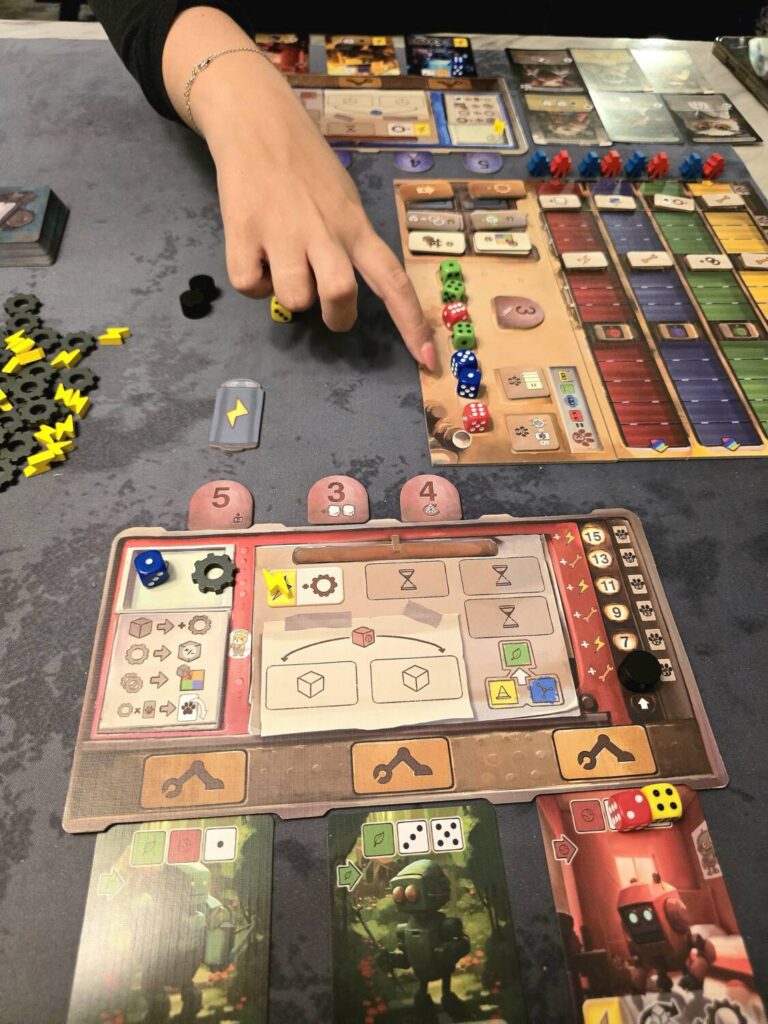
Machine Noises
Sparks is played over a number of rounds, where players take turns as the active player by playing one of their four drafting tiles. The game ends when all players have used all their tiles, and points are tallied to decide the winner. The central board—called the “junkyard”—holds a pool of dice that vary in color and value. The active player plays a tile, allowing them to draft a number of dice from left to right (or right to left). Each other player then drafts one die from the remaining pool in the same manner. Afterward, players simultaneously run dice through their player boards.

Dice are played onto robot cards, which come in one of four suits. To be built, a robot must match a specific combination of die color and value. Once built, robots are placed in a scoring area and move up one of four tech tracks (which can trigger other actions). Players can also use electricity pieces to activate effects or spend gears as free actions to manipulate dice or play assistant cards from their hand. Optionally, players can use dice to increase their factory level, which multiplies their assistant card scores at the end. Upgrade tiles provide passive powers or benefits. Since all play is simultaneous, players can “run their factory” in any order, setting up some juicy combos. It feels like a scaled-down Raising Robots.
Assistant cards offer one-time or ongoing effects and get exponentially more expensive to play. When all players are finished, the active player rotates, and the cycle continues until everyone has been the active player four times. Scoring is straightforward: multiply the number of assistants by your factory level, add points from robot sets and upgrade tiles, and voila! The player with the most points sparks the most joy—and wins.

Spark It To Me
This game is wicked fast. Every time I’ve played, I’ve thought, there’s no way I’m getting all these cards out. Yet every time, I find myself building crazy combos and dropping multiple cards in a single turn. Mechanically, the game is simple, but the strategy comes from chaining combos to stretch your turn. Action efficiency is the name of the game.
The only real interaction is the dice draft—after that, everyone puts their heads down and runs their factory, often mumbling through their turns. Yes, it’s multiplayer solitaire, but it’s a fun puzzle while you’re in it. You can’t do it all: you won’t run up every track, build every robot, and snag every upgrade. The joy comes from seeing how much you can squeeze in.
The game has a similar decision chain DNA as Grand Austria Hotel: If I draft this die and put it here, it completes this, which gives me that, which lets me do this… If I’m only doing one or two things on a turn, I’ve wasted it. The robot factory is always busy, and idle hands will fall behind!
Some players may shy away from Sparks due to the randomness of dice draws. With so many colors and values, things won’t always line up. Luckily, you have until the end of the round (i.e., when all players have been the active player once) to place your dice, giving you time to plan tactically. Plus, you can carry over one die each round, adding some welcome flexibility. The energy actions, which refresh each round, are especially fun. The icons, functions, and even the tokens feel ripped straight out of Revive—which I love. The combos be comboing.
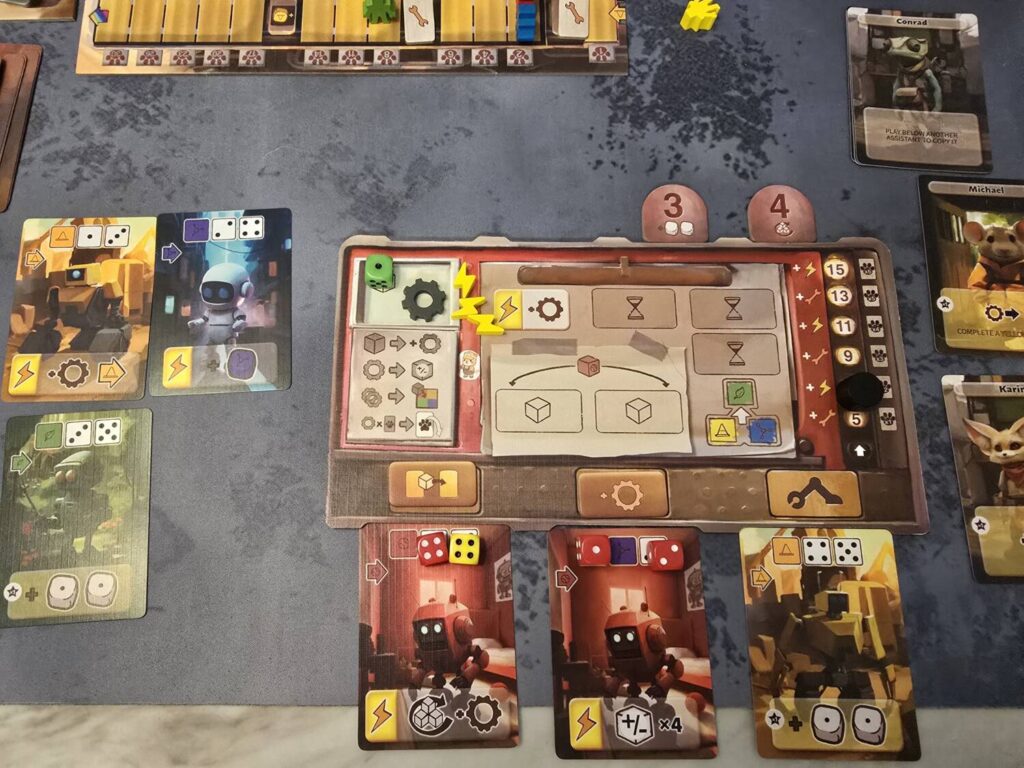
While Sparks may not break into top ten lists or sweep award season, it’s a blast on the lighter side. It’s approachable for non-gamers and hobbyists alike, and it doesn’t overstay its welcome. My only knocks are the somewhat bland art and occasional dice randomness. I can see the sparks fading over time, but it’s worth keeping around for more than a few plays.
Because when a game comes down the assembly line with dice drafting and card combos, it’s going to Spark joy in me every time.


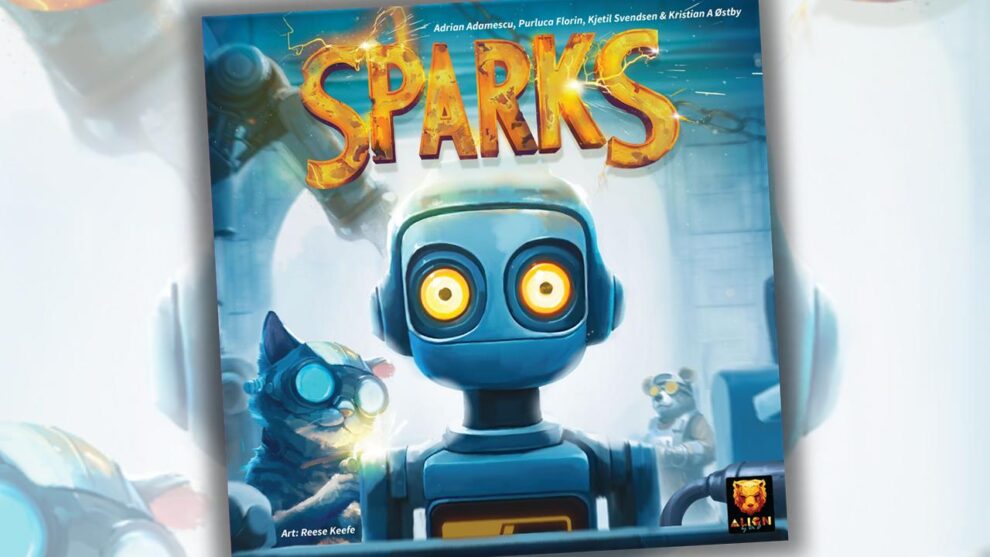

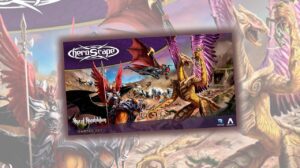





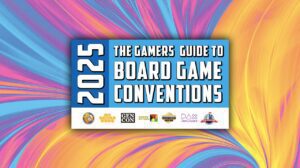

Add Comment